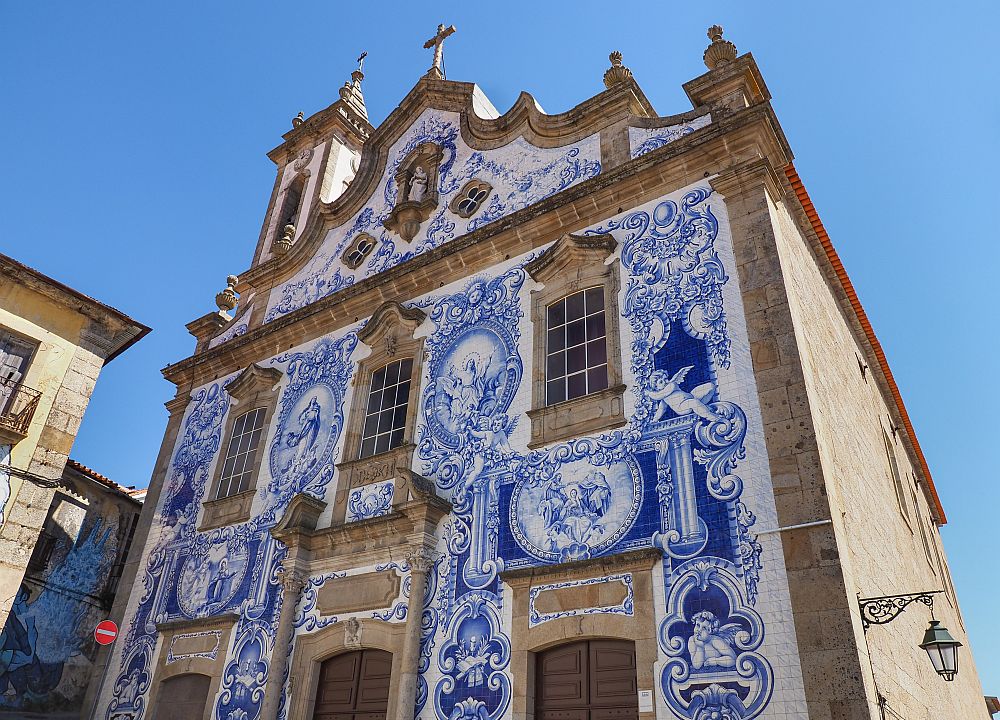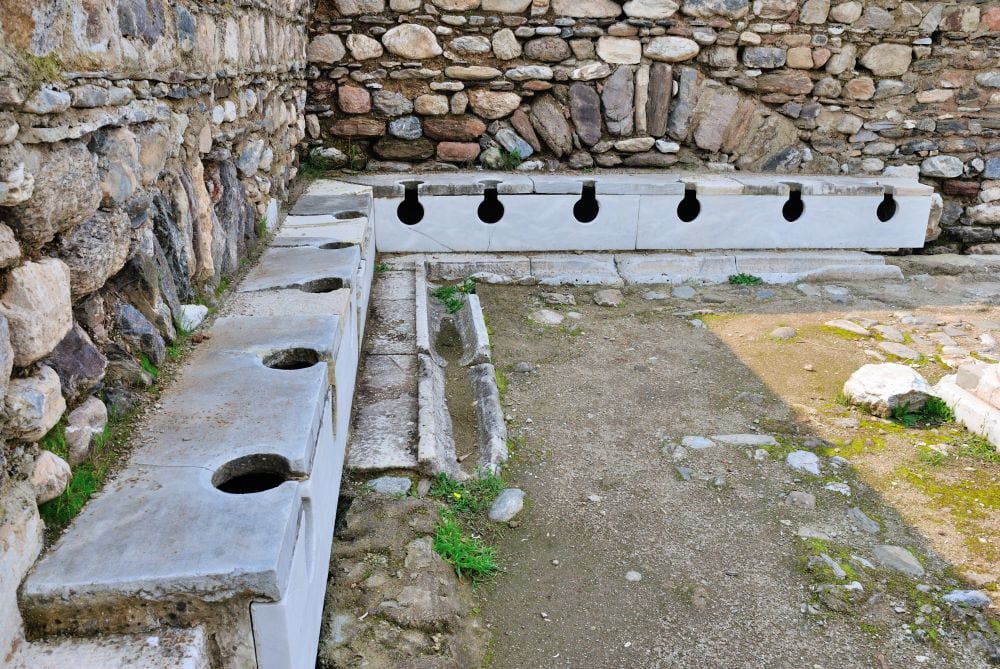
[Image above] The oldest surviving stained-glass windows still in situ are thought to be the Prophet Windows in Augsburg Cathedral in Bavaria, Germany. These windows, dated to the late 11th and early 12th centuries, feature the prophets Hosea, Moses, Daniel, Jonah, and David, in order above. Credit: Allie_Caulfield, Flickr (CC BY 2.0)
“A precious material in the Middle Ages, a valued commission in the modern world, the [stained glass] window is a source of contemporary delight even as it retains an ability to make present the past.”
– Virginia Chieffo Raguin, Stained Glass: From Its Origins to the Present
Stained-glass windows have been an important part of our culture for centuries, even as the fabrication techniques and themes depicted in these artworks have changed. In recognition of stained glass’s importance, we at CTT arranged a special three-part series on stained glass that is published every other Tuesday throughout the month of April.
The first part on the techniques used to create stained glass can be accessed here. The second part, which you are reading right now, provides an overview of the early history of colored glass and details the rise and fall of stained-glass windows between the 11th and 16th centuries. The third part, which publishes April 30, will cover the revival of stained glass in the 19th and 20th centuries and its use today.
I hope you enjoy Part 2 of our stained-glass series.
Early history: From colored glass items to stained-glass windows
As reported by The Stained Glass Association of America, Egyptian beads dated between 2750 and 2625 BCE are the earliest known examples of human-made glass. But it was many centuries later, in the 1st century CE, that Romans figured out how to caste large glass slabs and use these pieces as windows.
While colored glass was used as decorative inlays as far back as the ancient Assyrian empire (900–600 BCE), the use of transparent, colored glass in windows started in the 7th century. Glass window shards recovered from St. Paul’s Monastery in Jarrow, England (founded in 686 CE) are some of the oldest examples.
Stained-glass windows eventually spread from the Mediterranean to Northern Europe. The 11th and 12th centuries are considered the first “golden age” of European stained glass, as art historian Xavier Barral i Altet writes in Stained Glass: Masterpieces of the Modern Era.
The rise and fall of stained-glass windows, from the Middle Ages to the Renaissance
During the initial “golden age” of stained glass in the 11th and 12th centuries, monasteries played an important role in developing this artform. Archaeological samples from monasteries reveal that monks started painting on glass around 750 CE. About the middle of the 11th century, glass painting expanded beyond the monastery walls and eventually became a secular art.
Large-scale stained-glass manufacturing developed in the mid-14th century and was typically a two-person process: an artist developed a design for the panel, and a painter applied this design to the glass. In some cases, one person was both the designer and painter.
During the middle of the 12th century, the use of stained-glass windows in cathedrals became popular with the rise of Gothic architecture. This architecture style is attributed to French abbot and statesman Suger, who renovated the Basilica of Saint-Denis in France. He used revolutionary vaulting and construction techniques, which provided the perfect framing for stained-glass windows.

Outside and inside the Basilica of Saint-Denis. Credit: (left) Steve Cadman, Flickr (CC BY-SA 2.0); (right) Ninara, Flickr (CC BY 2.0)
The Gothic style spread beyond France during the 13th century as more cathedrals were built. During the 13th to 15th centuries, which art historian Virginia Chieffo Raguin dubs “The Age of Great Cathedrals,” cathedrals used stained glass to create religious scenes from the Bible to help educate the illiterate.
According to Raguin, stained glass was viewed as an intimation of God’s very nature because “[Divine] light was transparent as it left the Creator, acquiring color, and thus its ability to be visible, as it penetrated the material world,” she wrote in her book Stained Glass: From Its Origins to the Present.
The town of Chartres, France, became one of the leading stained-glass manufacturing centers in Europe during this period. The town’s cathedral is famous for its stained glass, with a whopping 176 windows.
During the 14th century, the city of York, England, also became an important center for stained glass. Stained-glass windows were installed in many of the city’s churches, including York Minster, which has windows from various centuries and in a range of styles. Other major stained-glass centers included Marseilles, France, and Murano, Italy.

This view of York Minster is centered on the South Transept, which displays the Rose Window that dates from about 1500 CE. Credit: Len Williams, Geograph (CC BY-SA 2.0)
During the Renaissance (1450–1650), stained-glass design moved away from religious subjects to focus on secular themes. Large-scale stained glass became three-dimensional and used vibrant colors to depict new themes. A new middle class emerged, and these people built houses with private chapels and spacious halls suitable for large stained-glass windows.
In addition to the trend toward secular and vibrant designs, large cathedrals went by the wayside during the 15th and 16th centuries. Instead, smaller parish churches became the norm, often decorated with high-quality artwork of standing figures or scenes that emphasized moral instruction.
Johannes Gutenberg’s invention of the printing press in 1450 also influenced window design, with texts and images borrowed from printed materials and popular literature becoming common themes in stained-glass windows. The use of stained glass in cloisters, or the covered walkways that form a quadrangle within a cathedral or church, also became a common location for installing stained glass besides just windows in the main building.
Stained-glass production reached its peak around 1500, and its demise during the next few centuries is partially attributed to the Reformation. During this period, Protestants rejected the use of elaborate religious art, leading to the destruction of many stained-glass windows. The Thirty Years’ War (1618 to 1648) also contributed to its demise.
As the popularity of stained-glass windows fell, transparent glass or enamel decorations were used in buildings instead. Smaller windows based on heraldry (coats of arms) became popular, and roundels, i.e., a single pane painted with vitreous paints and silver stain, were often chosen for heraldic displays.
The 18th century was also a challenge for stained glass. The French Revolution resulted in more destruction of religious buildings, which spread to other parts of continental Europe. It was not until the 19th century that stained glass began to make a revival.
The revival of stained glass in the 19th and 20th centuries and its use today will be detailed in Part 3 of this series, which publishes April 30 here on CTT.
Further reading
Books
- Stained Glass: From Its Origins to the Present, by Virginia Chieffo Raguin
- The Art of Stained and Painted Glass, by Alfred Werck
- Stained Glass: Masterpieces of the Modern Era, by Xavier Barral i Altet
- Stained Glass in America, by John Gilbert Lloyd
Online resources
We also thank The Stained Glass Association of America for the insightful and educational content featured on its website.
Author
Laurel Sheppard
CTT Categories
- Art & Archaeology
- Education
- Glass


